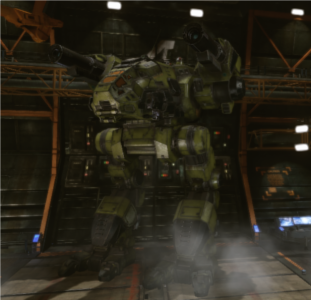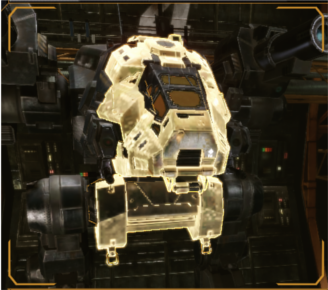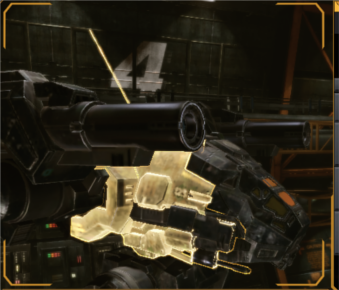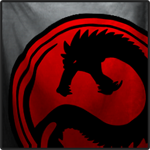A Catapult K2 Guide
For newbies and oldies
The Catapult (of 'Cat') K2 is probably my favourite mech. I liked the look of the mech when I first started the game, and it has remained my favourite ever since. I've tweaked my K2 several times, with various results, and this guide is my way of sharing my conclusions. This guide is mostly for new players, but it may be of some use to experienced pilots unfamiliar with the K2, or Catapults in general.
An attractive body
The shape of your mech is pretty important. A Mech's shape plays a large role in where you may place weapons, the amount of armour you may allocate to each region, and where you're going to take the most hits.
The Catapult K2 has an atypical chassis among mechs: it bears no resemblance to a person. The ‘torso’ is not really a torso at all but a hull. It is round and faces forward, with an aerodynamic-looking cockpit. It has some similarities to the beak-like cockpit of the Raven. Both look like they want to go flying.

The ‘arms’, rather than hanging down from shoulders to protect the side torso, are high-mounted gun emplacements. If you happen to load PPCs on them, you get rather long barrels (as pictured). If you load some other energy weapons, they look a bit stubbier and less impressive, but some people don’t seem to mind. We’ll get to weapons a little bit later.
The Catapults legs, while atypical in that they resemble bird legs – again like the Raven - are the least interesting part of this machine. Most opposing players seem to agree. While leg shots do occur, they are not common. If this mech was a scout, they’d be attacked all the time (to slow it down). As it is, they don’t.
Everyone dies, eventually
I’ve seen guides that proclaim the Catapult is heavily armoured. They are missing an important detail. The Catapult’s central torso – hit region that houses your engine – is huge. In human-shaped mechs, the central section blends with the left and right section, so while hitting the chest is easy, hitting the centre is harder, and the centre still has good armour. Hitting a Catapult’s centre is simple.

This is a picture of the central section (or ‘hitbox’) of a Catapult. As you can see, it’s big. In the middle there is the un-highlighted cockpit hitbox – it’s arguably the largest cockpit hitbox in the game. Destroy the components in either, and you’ve killed a ‘Cat’.
As a general rule, whenever you look at the armour on a section of a mech, consider how much area that armour covers. A small area (such as a cockpit) doesn’t need much armour; lasers will rake over the area, but they often won’t stay long, and lucky auto-cannon shots won’t happen twice (though skilful ones might).
Large areas, in contrast, need larger amounts of armour to be safe. This is where the catapult’s central section and cockpit are not strong. Both the cockpit and the central hitbox are large, and can be shot from three different sides. Most players, when faced with a Catapult, aim for the centre. The ambitious ones go for the cockpit. This is the defining vulnerability of all Catapults.
The advantages of having a big heart
New players may not be familiar with XL engines. They are expensive, lighter, versions of standard engines. The amount of tonnage saved by installing this engine can make a mech significantly more effective. They also take up space in the left and right torso sections of the mech. This is an important weakness. A mech with an XL engine, that loses a side torso section, dies – just as if the central section was destroyed.
There is a tendency among pilots to shoot out side torsos (or ‘shoulders’) of larger mechs anyway. A destroyed side torso not only destroys all the components in that section, but severs the relevant arm – and its weapons – from the mech as well. The presence of an XL engine makes a weakening shot a killing one.

However, Catapults are mostly immune to this.
Why? The greatest weakness of the Catapult is arguably its greatest strength. Their central section is so large, that shooting them in the side is frankly more trouble than it’s worth.
Pictured above, you can see the right side section of a Catapult. It is mostly tucked in behind the front, and only presents a good target from the side, and does not contain a large cockpit to shoot at. It gets fewer hits because of this, and after several skirmishes usually retains more armour than the front.
The arms of the Catapult don’t hang down to serve as shields for the side sections, but they don’t need to. Most shots will come from the front of you (if you’re playing well), and those who flank you (if they’re wise) will attack more vulnerable areas – like the front or rear.
So a good Catapult build automatically includes an XL engine. This allows an upgraded Catapult to field armaments of similar tonnage to a standard Cataphract – if not slightly more. Such a mech will never (objectively) be the greatest front-line brawler – with front hitbox the size of Spain, that’s not likely unless you’re a particularly canny pilot. However, the extra tonnage allows for plenty of other choices.
Bang! Bang! You’re dead! (Fifty bullets in your head!)
When it comes to armaments, and components, there seems to be no clear consensus on what makes the ‘best build’. I’ve seen a video of a very successful Catapult-K2 that specialised in heavy punches at short range (with four medium lasers and two size 10 Autocannons).
I tend to stick to the classic design: powerful, long-range weapons in the arms. Like the Jagermech and the Blackjack, the high-mounted arms of the K2 provide an advantage when peaking over obstructions. This means when the pilot spies a target just over a hill, the weapons in the arms have a clear shot. This is not so with a ‘brawler’ mech’s with low arms. This is an example of what I mean:
While playing Caustic Valley (a map with plenty of ridges to hide behind), I once saw an Atlas’s head rise up from behind a slope several hundred meters away. He was surveying the area. I happily shot him in the head (I didn’t hit the cockpit, unfortunately). My arm weapons had no trouble clearing the earthen obstacles between myself and him. The Atlas, however, had no high-mounted weapons. I saw dirt kick up as he tried to return fire, but he was hitting the ground instead.
With good positioning, and decent range, you ought to be able to take shots without being hit in return.
With a little help from my friends
I’ve made no secret that I don’t regard the Catapult-K2 to be a good brawler. Its vulnerabilities are too large, and too widely understood. This means that taking the front line, and putting yourself at the centre of attention, is rarely a good idea when piloting a Catapult.
Instead you’ll perform best when in groups, often with someone else leading. Stick with other mechs, particularly ones suited to front-line attacks such as Cataphracts, Centurions, or Atlases. Scouts can also split the incoming fire – not by taking fire but by diverting it (often in futile attempts to hit such a small target). Let other mechs get close. It’s likely they’ll have shorter range weapons anyway.
If you lack front liners, or you’re with a group of cautious players, try not to crowd them when they peek past obstructions. They may need to reverse in a hurry. If they do, you might get in the way. If you want to shoot, find your own vantage point to shoot from. You’re more likely to take people by surprise, and you’ll getter a clearer field of fire.
With most K2 builds you’re not going to be in the thick of it, but with patience, good aim, and a careful build, you’ve as good a chance as any to land important shots.
You’re their heavy artillery – be precise.
Edited by Titus Puffinius, 28 August 2013 - 02:37 AM.

































